I’ve spent the past few days highlighting some of the works exhibited but i still had to write a proper review of Green Platform. The exhibition, dedicated to art, ecology and sustainability, closes on July 19 at Strozzina (aka CCCS) in Florence.
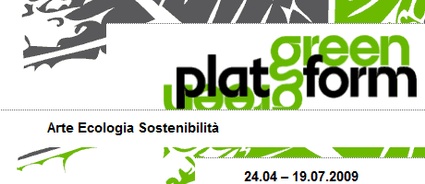
It is a good show. Definitely less spectacular but gutsier than Radical Nature which i had visited a few days before. It’s also much darker. Although there are projects that lead the way to sustainable and achievable strategies, many others leave you with a guilty (but better informed) “What have we done to this planet?” feeling.
About two third of the pieces exhibited have been produced by the Strozzina. A few of them by the usual suspects but there’s also a fair amount of talented Italian artists i had never heard of.
As curator Valentina Gensini explains in the essay she wrote for the catalogue:
Traditional indicators of human well-being (life expectancy, literacy, access to sanitation, grain yield, spread of information technology, etc.) do not take escalating environmental and humanitarian catastrophes into account, nor do they include important data regarding both the reduction of biodiversity – viewed also in cultural terms – and damage to the environment, some of which stems from technological innovations and scientific experimentation whose long-term effects are still unknown. GDP (gross domestic product) does not describe the general quality of life in any way, nor does it indicate the environmental sustainability of the paths that have been undertaken.
Accordingly, the exhibition attempts to address ecological issues not only in environmental terms but also with respect to its philosophical, psychological, economic and social implications. As you can guess, Green Platform provides visitors with an intense experience. One which comes with much more questions to ponder on once you’ve left the gallery than answers.
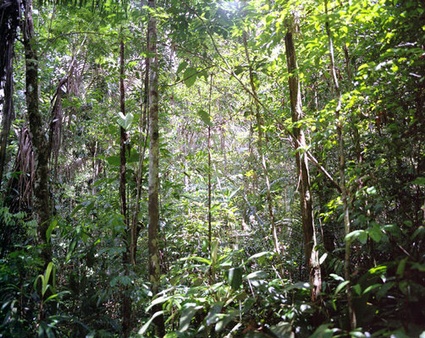 Requiem, 2007
Requiem, 2007
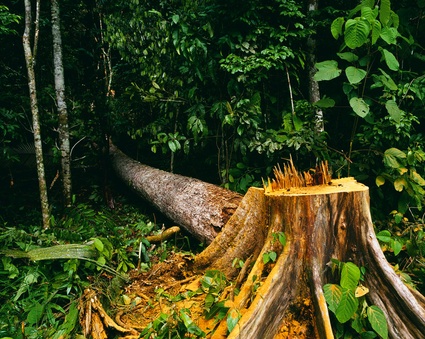 Requiem, 2007
Requiem, 2007
The work i found most subtle and powerful was Julian Rosefeldt ‘s magnificent Requiem, a four screen video installation arranged in a square. Visitors find themselves surrounded by 4 films shot in the Brazilian rainforest, home of one third of the primary forests in the world. Precious and fragile as it is, the area is nevertheless relentlessly threatened by logging multinationals.
In the beginning of the video, visitors can revel in the contemplation of lush vegetation, bright colours, the hum of insects, birdsong and the sound of raindrops falling from the trees. After a few minutes, the peacefulness is interrupted by a disturbing sound which signals that a tree is falling nearby. The crashing of the tree is quickly echoes by another one. Then another one. Although, no human figure appears on the screen, it is impossible not to feel guilty and ashamed at man’s lack of consideration and long-term intelligence regarding the health of this unique ecosystem. The fact that the sound of the chainsaw is absent, makes the crash of falling trees all the more resonant and distressing.
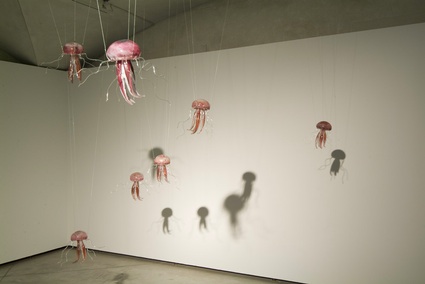 Medusa Swarm, 2009. Photo Credit: CCCS, Firenze; Valentina Muscedra
Medusa Swarm, 2009. Photo Credit: CCCS, Firenze; Valentina Muscedra
Tue Greenfort is the darling of exhibitions about ecology and sustainability. The work he created especially for Green Platform is a direct reference to the rise in temperature observed in the Mediterranean Sea. A combination of climate change, water pollution and lack of natural enemies like turtles and tuna decimated by overfishing have enabled the mauve stinger, a jellyfish with a very painful sting, to proliferate in the Mediterranean and threaten its biodiversity. Greenfort asked artisanal glassworkers on the island of Murano in Venice (an area which is more aware than most of the consequences that the rising level of the sea can have on urban life) to produce glass models of the pink jellyfish. The battle against the invasive jellyfish is absurd and tragic as the damage they are causing is the result of human foolishness. They are a part of nature but are deemed not ‘natural’ enough for European waters. The battle against the proliferation of the mauve stinger constitutes the umpteenth attempt by man to combat the consequences of his bad behaviour without attacking the root of the problem.
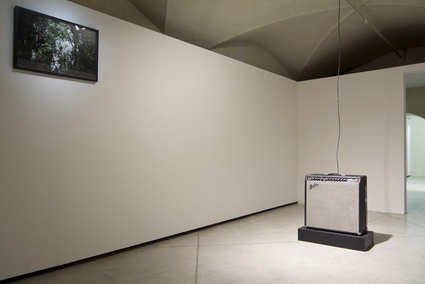 MARCH.16, 2008 (Pharomachurus mocinno), 2008. Photo Credit: CCCS, Firenze; Valentina Muscedra
MARCH.16, 2008 (Pharomachurus mocinno), 2008. Photo Credit: CCCS, Firenze; Valentina Muscedra
Henrik Håkansson (who also has another work in the exhibition Radical Nature in London) had a long stay in the Mexican reserve of Montes Azules, in the Selva Lacadona (Chiapas.) The area is gradually shrinking as a result of human activities, leaving animals to constantly struggle for survival against the progressive reduction of their living space.
The audio works featured in Green Platform reproduces the song of the quetzal. Once venerated by the Maya and the Aztecs as Quetzacoatl, the feather-serpent, the “king” of birds is now an endangered species. Visitors can only hear the bird for a few seconds every 12 minutes, a rhythm that reflects the rareness of the bird. To hear the bird, you either have to be patient and stay there until it sings again or you must be lucky and stumble upon it. In Håkansson’s work the song of the quetzal is reproduced by an amplifier, a Fender Reverb 65, which is itself considered a legend and defined, on the rock scene, as the “king” of its kind. The work thus takes the form of a sculpture/sanctuary, a tribute to the living legend of the quetzal, whose song might one day be heard and remembered only by artificial means.
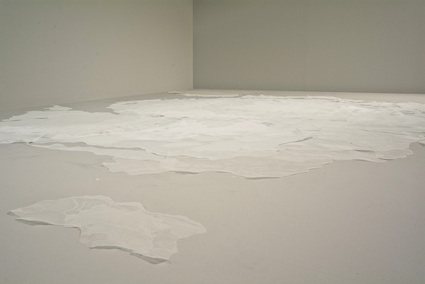 Inlandsis 09, 2009. Photo Credit: CCCS, Firenze; Valentina Muscedra
Inlandsis 09, 2009. Photo Credit: CCCS, Firenze; Valentina Muscedra
Dacia Manto‘s Inlandsis 09 layers several sheets of delicate eco-plastic, derived from maize, to reproduce the area of the South Pole, which is gradually shrinking due to global warming. It has been estimated that over 13,000 square kilometres of marine ice have been lost over the past 50 years. Internally, the huge shelf loses between 90 and 150 square kilometres of ice each year. Manto invites us to consider the geography of the South Pole as a living and fragile organism whose protection is vital for the future of our planet. It can be disturbed the softest blow and even visitors passing near the sculpture seem to cast a menacing shadow upon it.
 Invisible 5 (The Grapevine, Buttonwillow; San Fernando Valley Map), 2006. Images credit: Kim Stringfellow, Amy Balkin
Invisible 5 (The Grapevine, Buttonwillow; San Fernando Valley Map), 2006. Images credit: Kim Stringfellow, Amy Balkin
Developed in conjunction with artists Kim Stringfellow and Tim Halbur, together with the Pond: Art, Activism, and Ideas and Greenaction for Health & Environmental Justice organisations, Amy Balkin ‘s Invisible-5 has a more journalistic approach. The project examines the social, economic and environmental context of the San Joaquin Valley along whose length runs Interstate 5 connecting San Francisco and Los Angeles. A strategic axis for the transport of goods and people, the corridor is also key in the development of livestock farming and intensive agriculture, waste disposal, oil and gas industries and the construction industry. Interstate 5 is one of the most toxic areas on Earth.
Invisible-5 is an audio tour starring the people and local communities who fight for environmental justice. The sound archive, shared over the Internet, gathers the testimonies of the inhabitants along with typical local sounds and music.
Green Platform, an exhibition curated by Lorenzo Giusti and Valentina Gensini, is on view until July 19 in Florence.
All my pictures. Image on the homepage: Julian Rosefeldt, Requiem 4, 2007, Lightjet print.
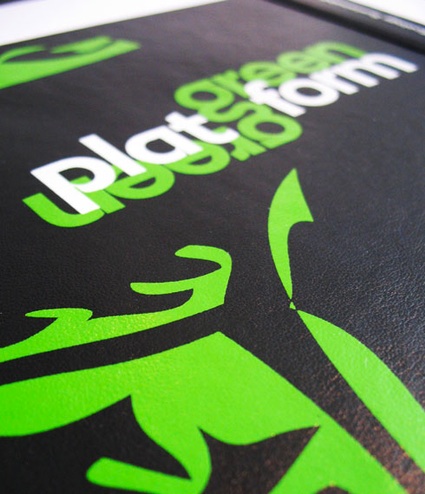
P.s. The catalogue of the exhibition is to die for. Strozzina has generously uploaded the essays online and the object itself is a superb large format Moleskine.
